One of the most impressive things to see in Canada this year is the garden artistry at MosaiCanada 150. In June 2017, Jacques Cartier Park Gatineau, Quebec, was turned into an artistic garden installation with 40 imaginative giant three-dimensional sculptures made from living plants.
Selected for their colourful foliage, the plants grow in soil between geotextile layers supported by a metal frame.
The living sculptures are watered by an internal irrigation system and each scene is a fascinating chapter in the story of Canada.
A path meanders past scenes that display what’s important in each Canadian province and territory, from polar bears, wolves and muskoxen to Mounties, French explorers, Niagara Falls and the historic happenings that shaped the nation.
Contents
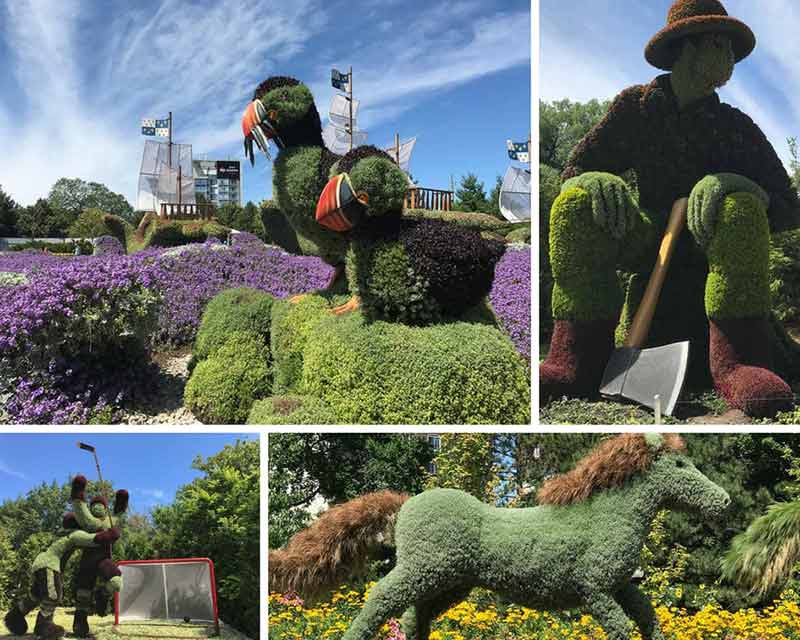
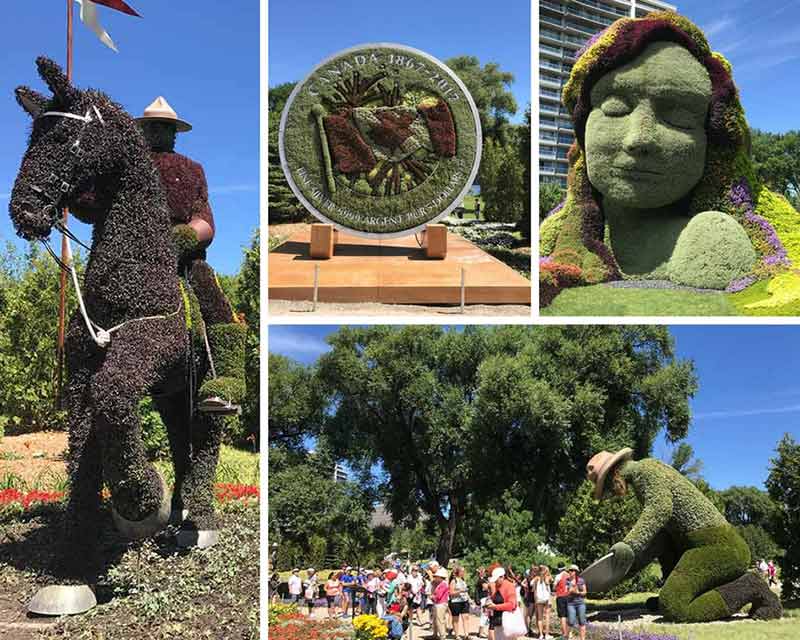
MosaiCanada 150 highlights
Train Across Canada
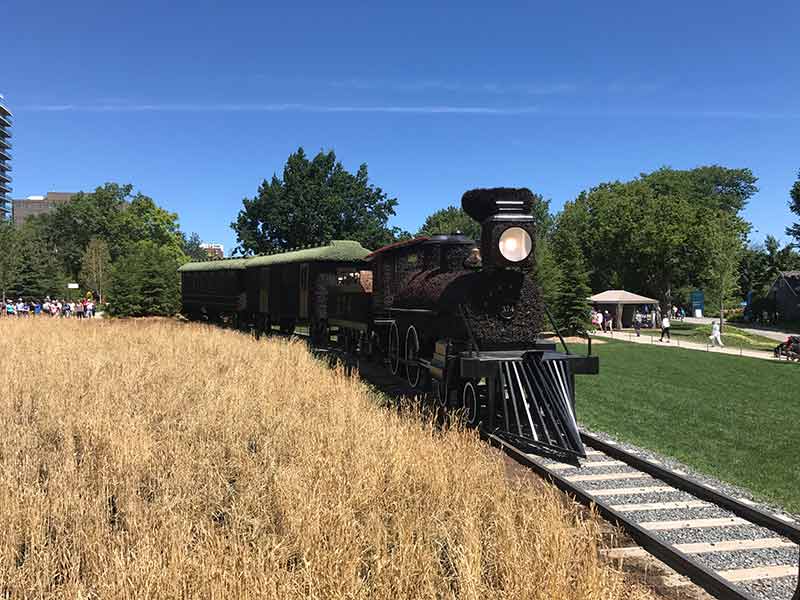
As soon as you enter MosaiCanada 150, you’ll see a replica of a 1920s Canadian Pacific Railway station, complete with a living plant version of the first Canadian Pacific Railway passenger steam locomotive.
Founded in 1881, Canada’s railway system connected the country from east to west and was the glue that united the nation.
Find out more about experiencing train travel in Canada.
Quebec – New France and the St Lawrence route
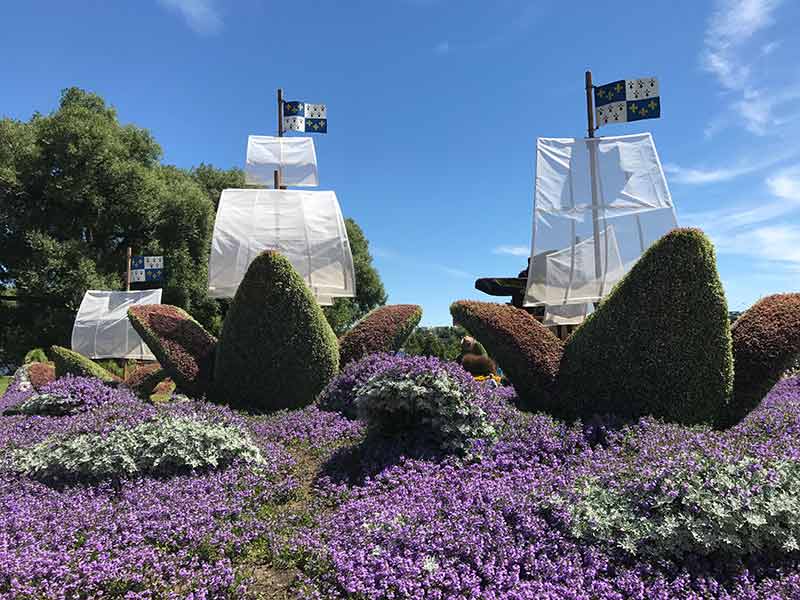
There’s little doubt that the three boats shaped like fleur-de-lis represent the French province of Quebec.
This period in Quebec’s history was fascinating.
Between 1534 and 1541, explorer Jacques Cartier made three trips to Canada as the representative of France’s King Francis I.
Enroute to searching for riches and a new route to Asia, Cartier made several attempts to establish a colony in Quebec.
He brought 110 men and three ships (Grande Hermine, Petite, Hermine and Emerillon) with him on his second trip in 1535 and camped at the mouth of the Saint Charles River (near what is now Quebec City).
25 men died and souring relations with the native people of the land forced them to return to France in May 1536.
Not to be put off by obstacles, Cartier returned for the third time in 1541, but his plans to establish a colony met with more setbacks – such as diseases and misunderstandings with the Iroquoian inhabitants.
Despite the setbacks, Cartier’s attempts played a big part in shaping Canada’s history by raising the profile of “New France” and the potential of the St Lawrence route to the interior.
Find out more about Canada’s history here.
Ontario – Niagara Falls
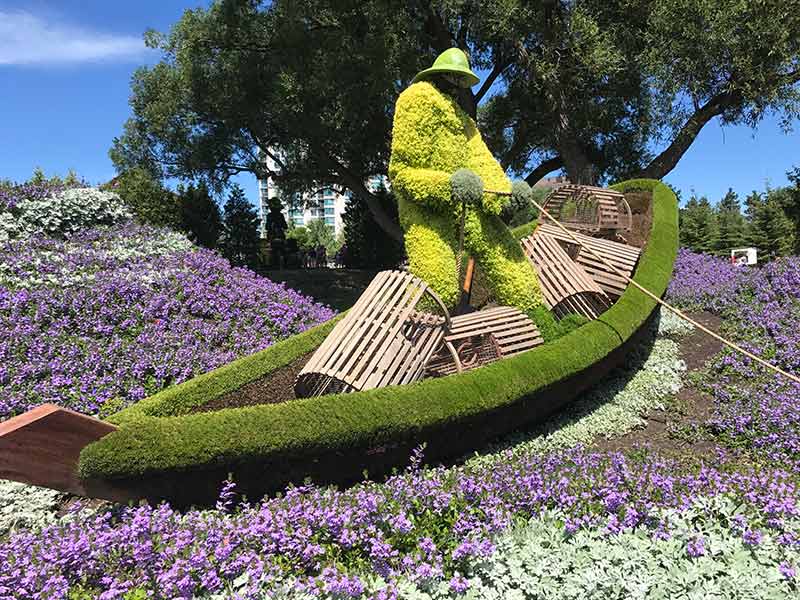
Niagara Falls is one of the world’s natural wonders.
Straddling the USA and Canadian border, Niagara Falls attracts millions of tourists each year.
20 percent of the world’s freshwater lies in the four Upper Great Lakes (Lake Michigan, Huron, Superior and Erie).
The lakes empty into the Niagara River and eventually cascade over the falls.
The water system of Southwestern was the life force for farms, factories and industry.
Five figures rise from the waters, highlighting the diversity of peoples, from the First Nations to European settlers, African Americans escaping from slavery and modern-day immigrants.
Find out more about visiting Niagara Falls here.
British Columbia – Bill Reid’s Killer Whale
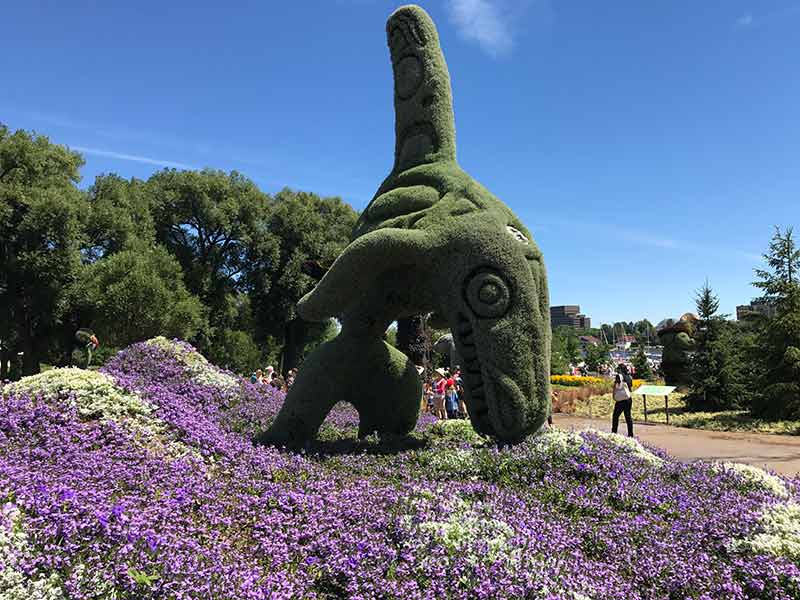
This mosaic culture is a recreation of Bill Reid’s (the forefather of the revitalisation of Haida art) bronze sculpture of the killer whale Chief of the Undersea World at the entrance to the Vancouver Aquarium.
The killer whale (or orca) is a superpredator found in the waters along Canada’s west coast.
More than one kind of orca can be found in the coastal regions of British Columbia.
To the First Nations people, the orca represents benevolence, intelligence and compassion.
Bill Reid’s works are on display at the Canadian Museum of History, where you will find a plaster cast of this famous sculpture.
Find out more about First Nations vacations here.
Manitoba – Inukshuks, Northern Lights and Polar Bears
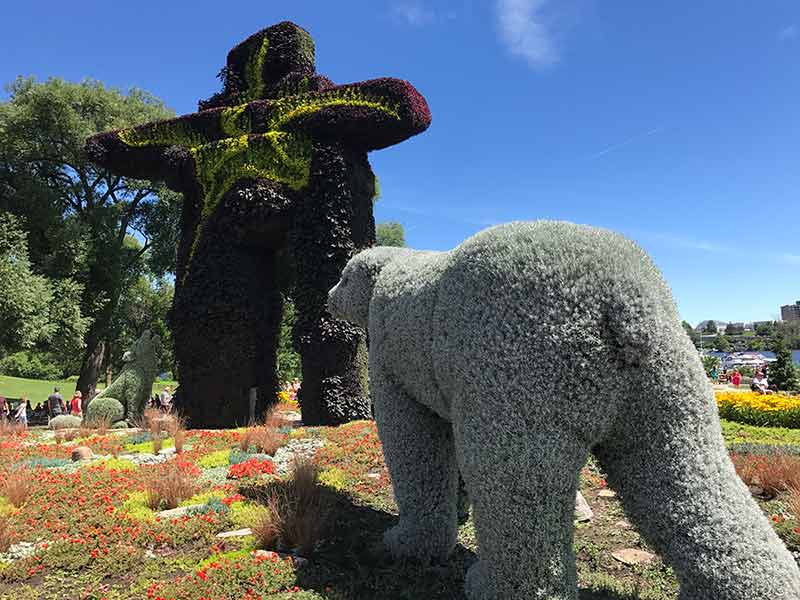
Manitoba’s symbols are a towering Inukshuk, a howling wolf, the northern lights and a polar bear.
The polar bear is a focus of legends of Canada’s northern lands.
Polar bears live in the Arctic and feed on seals, grabbing the seals when they come up for air or while they rest on the sea ice.
Polar bears gather along the shores of Hudson Bay in Churchill in Manitoba (the polar bear capital of the world), waiting for the sea ice to form so that they can hunt for seals.
If you can’t make it to Churchill, then visit the Journey to Churchill exhibit at Winnipeg’s Assiniboine Park Zoo for a cool polar bear experience.
Here’s a funny polar bear cartoon
Northern Canada – Muskoxen
Muskoxen (Ovibos moschatus) live in herds and belong to the same family as mountain goats and bighorn sheep.
They have soft underwool covered by a long outer layer of course hair.
Their coat provides insulation from the cold northern winters and the underwool (or qivuit) is as soft as cashmere.
In the Arctic communities of the Northwest Territories, muskoxen are a source of meat for subsistence harvesters.
Muskoxen crossed the Bering Strait into North America 90,000 years ago but were almost extinct in the late 1800s.
Their numbers have recovered due to protective programmes and there are over 100,000 muskoxen in Canada’s tundra and Arctic Islands of Canada.
Find out more about the Northwest Territories here.
Algonquin people
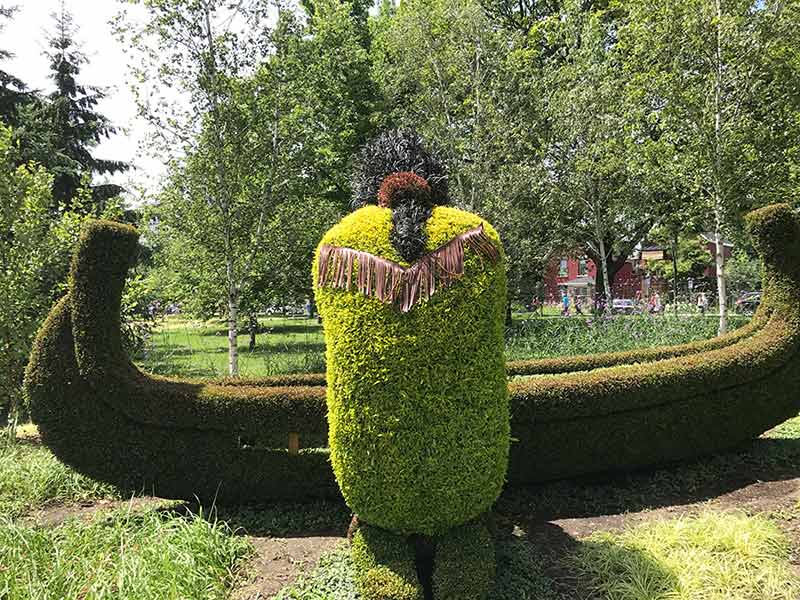
The Algonquin people were experts at building canoes from birch bark and the skill was passed down from generation to generation.
Children learnt by watching their elders.
Nine Lions
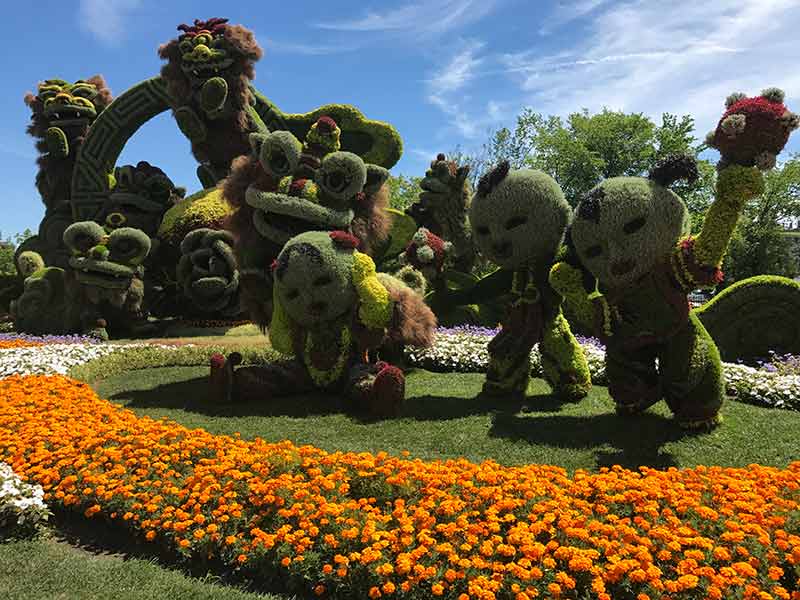
The lion dance is a 1000-year-old tradition performed during festivals and celebrations. Canada’s history of Asian migration began during the 19th-century gold rush and construction of the Canadian Pacific Railway.
There are large Chinese Canadian communities in Vancouver, Toronto and Winnipeg.
Legend of Aataentsic
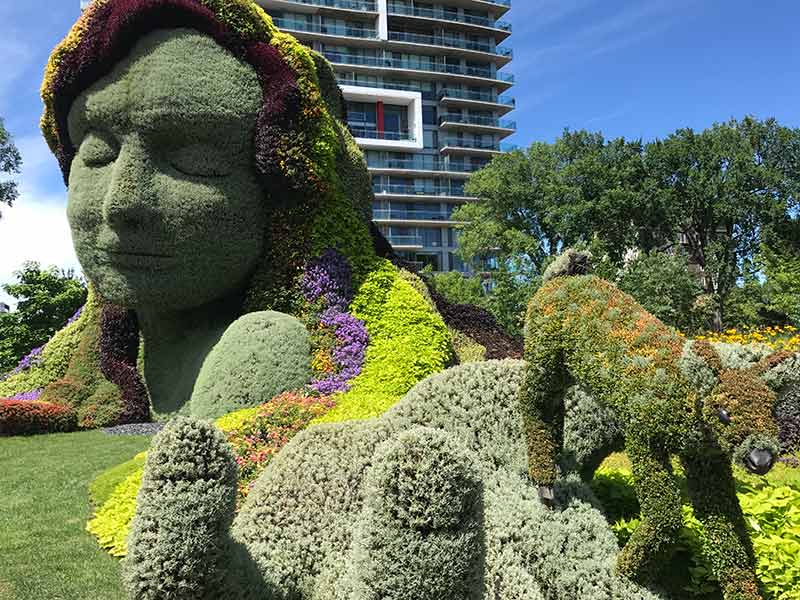
This is the centrepiece of MosaiCanada 150 and you can easily see why.
The visual impact of the goddess of all living creatures, Mother Earth, is totally captivating.
Mother Earth is also known as Pachamama to the South American Indians, Gaia in Greek mythology, Terra Mater in Roman myth, Mahimata in Hinduism Rig-Veda, Eorban Modor for the Germanic and Northern peoples.
Canadian Gardens
For more amazing Canadian gardens read these posts:
Mosaïc Culture Gatineau was at Jacques Cartier Park Gatineau until October 2018.
Mosaïcultures Internationales de Montréal is the not-for-profit corporation responsible for this exhibition.
At the end of the event, each of the province’s structures will be returned to the provinces for local gardeners to reuse and care for them.
The Gatineau exhibit reflects 150 years of history, culture, values and arts in Canada.
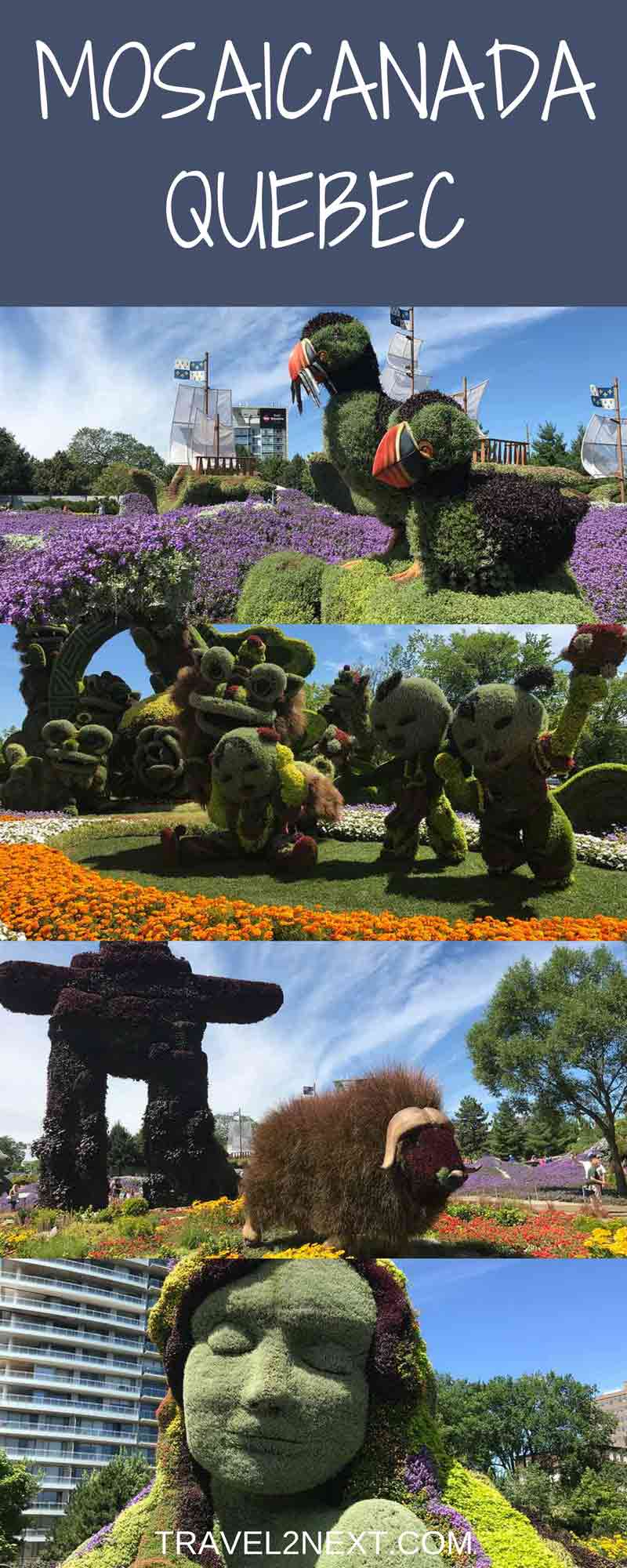
Plan Your Trip

Rent A Car – Find the best car rental rates at Discover Cars. They compare car hire companies to provide you with the best deal right now.

Find A Hotel – If you’re curious about this article and are looking for somewhere to stay, take a look at these amazing hotels.





